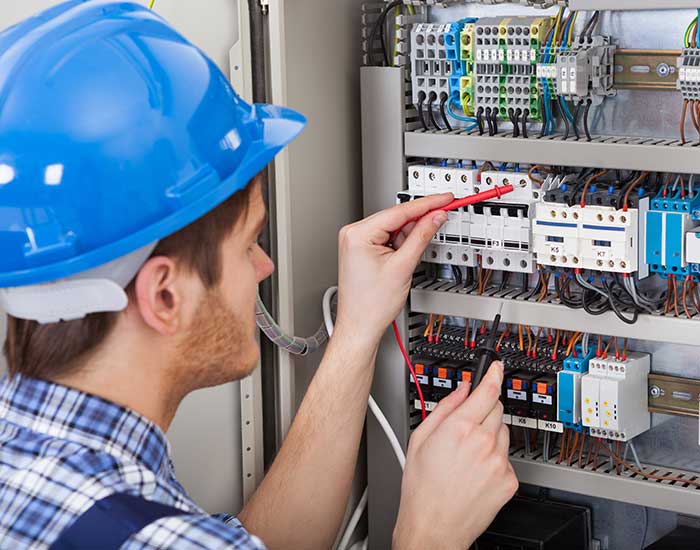Electrical Hazards

We Fix Electrical Hazards
There are electrical hazards in many homes and Business’s today. This list goes over the Top 9 electrical hazards that Biles Electric can fix so you can rest easy.
Top 9 Electrical Hazards:
9. Overloaded or damaged extension cords. This is an all-too-common cause of fires.
8. Excessive attic temperature. Larger diameter wires should be used to accommodate hot temperatures. Avoid bundling of wires as they pass through framing holes since heat cannot be dissipated easily in such situations.
7. Failing aluminum wiring connections. Many homes built in the 1960s and 1970s are exposed to this hazard. Check the U.S. Consumer Product Safety Commission, electrical safety publication #516 *Repairing Aluminum Wiring* (www.cpsc.gov)
6. No GFCI in bathrooms or kitchens, outdoors or near swimming pools. The ground fault interrupter has no doubt prevented many electrocutions. However, some early-vintage units were faulty and need to be replaced.
5. Not enough branch circuits and outlets. Consumption of electricity is rising in American homes. Be sure there are enough branches to deliver power to new appliances and electronics. And get rid of those extension cords in number 9 above.
4. Fuse or circuit-breaker misuse. Wrong fuses, or by-passed fuses, as dangerous. Also, overloading can occur if circuit breakers are not set to trigger properly, according to the load capacity of the wiring. Also, just because your home has modern circuit breakers, don’t assume they’ll last forever. Consider replacing them if they’re old.
3. Non-grounded or improperly polarized plugs and outlets. Grounding and polarizing were introduced as safety features. Don’t try to bypass them.
2. Wire gauge insufficient for loads. When in doubt, upgrade to 10 or 12 gauge wiring.
The #1 Wiring Hazard in Homes Today:
1. Old wiring, This can take the form of bare or frayed wires, crumbling insulation or faulty switches. Nothing lasts forever, including electrical insulation. Homes more than 30 years old are especially susceptible. Federal Pacific Video.
